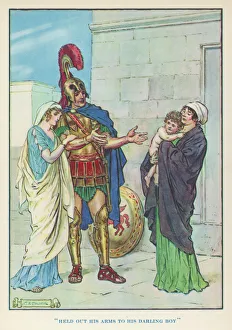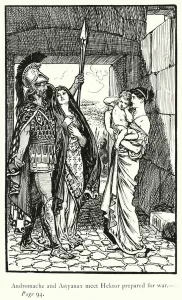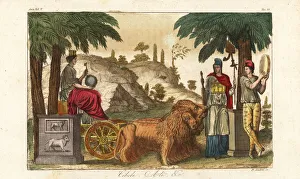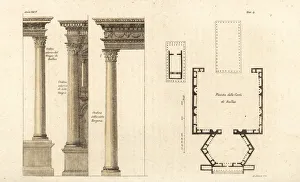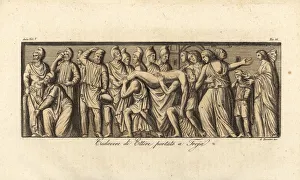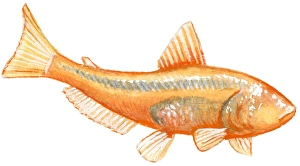Astyanax Collection
Astyanax, the son of Hector and Andromache, is a figure deeply rooted in Greek mythology and the Trojan War
All Professionally Made to Order for Quick Shipping
Astyanax, the son of Hector and Andromache, is a figure deeply rooted in Greek mythology and the Trojan War. In Homer's epic poem, The Iliad, we witness the heart-wrenching meeting between Andromache and her husband Hector as he prepares for war. This emotional encounter has been immortalized in various forms of art throughout history. One such depiction is an engraving titled "The Iliad: Andromache and Astyanax meet Hektor prepared for war. " It captures the bittersweet moment when mother and child bid farewell to their beloved warrior before his fateful battle. Another artwork that showcases this poignant scene is "Andromache mourning Hector, " painted in 1783. Here, we see Andromache consumed by grief as she mourns the loss of her brave husband. Astyanax's connection to divine beings can be seen through references to Cybele, goddess of the Phrygians, who rides a chariot. This symbolizes his lineage as part mortal and part godly descendant. Additionally, an attic red-figure cup from ancient Falerii depicts scenes from the Trojan War including Astyanax among other characters. The significance extends beyond mere artistic representation; it delves into themes of love, loss, sacrifice, and destiny. As depicted on pottery or canvas alike - like "Hector and Andromache" painted around 1708-10 - these artworks capture our imagination with their portrayal of human emotions amidst a backdrop of war-torn Troy. Furthermore, images showcasing architectural wonders like Heliopolis' Temple of Baalbek remind us that these stories are not just mythical tales but were believed to have taken place within real historical settings.

